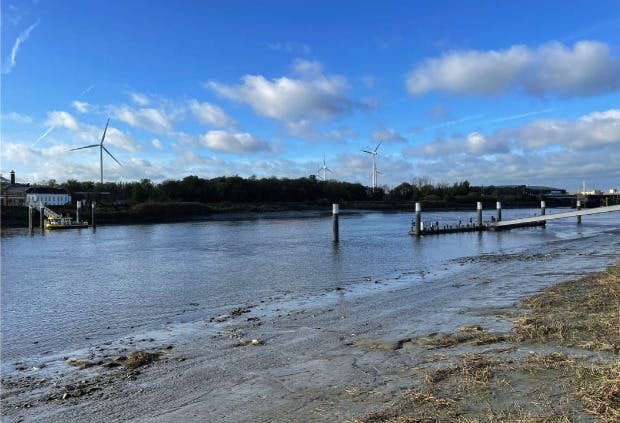Perhaps you have already heard about it: a few months ago, the new water test came into effect. What does this mean for the sale or purchase of your home or building land?
In Flanders, an estimated 211,000 homes and 29,000 building plots are located in flood-prone areas. That may seem like a lot, but it does not mean that all these homes are underwater during every flood. However, there is an obligation to provide information about flood susceptibility, a system that has been made simpler since the beginning of this year by introducing the new water test.
The new maps are more up-to-date and take into account the latest insights on floods. Measurements indicate an increase in flooding after heavy rainfall. This is a consequence of climate change, higher population density, waterways that react quickly, and overloaded sewers.
The 2 main changes:
Flood score A to D
The water test map indicating potentially flood-prone areas and effectively flood-prone areas is being replaced. Instead, a simpler system with scores from A to D is being introduced, which also appear in other domains.
Building and plot receive separate scores (G-score and P-score)
The previous water test map colored the flood susceptibility for the building and its associated plot as a whole. From now on, this will be done more nuanced. The building and the plot will each receive a separate flood score. This makes it clear whether floods are limited to a part of the (lower-lying) plot or also threaten the buildings.
Purchasing or building in a flood-prone area
Purchasing or building in a flood-prone area may seem like a big risk, but in practice, the situation is often different. Many municipalities have already taken measures against floods that are not yet mentioned on the water map. The new water test also provides a more detailed and nuanced picture of the risk. It now also specifies the source of the flood:
- pluvial (due to intense rainfall)
- fluvial (during major river floods)
- coastal flooding (due to sea storms)
This allows you to better assess the cause of the flood risk and to what extent a building or plot is at risk of flood damage. Furthermore, the water test provides insight into what measures you can take to prevent and limit water damage.
Consulting the Water Test
Some plots and buildings that were previously in flood-prone areas are no longer, and vice versa. You can find the water test for your property at →
www.waterinfo.be/watertoets.
Information Obligation
In Flanders, there is an information obligation regarding flood susceptibility. This means that anyone who wants to sell or rent a building or land is obliged to mention the water test scores.
Want to know more? For more information or advice, you can also contact our habicom experts via hallo@habicom.be or 03 449 42 4
